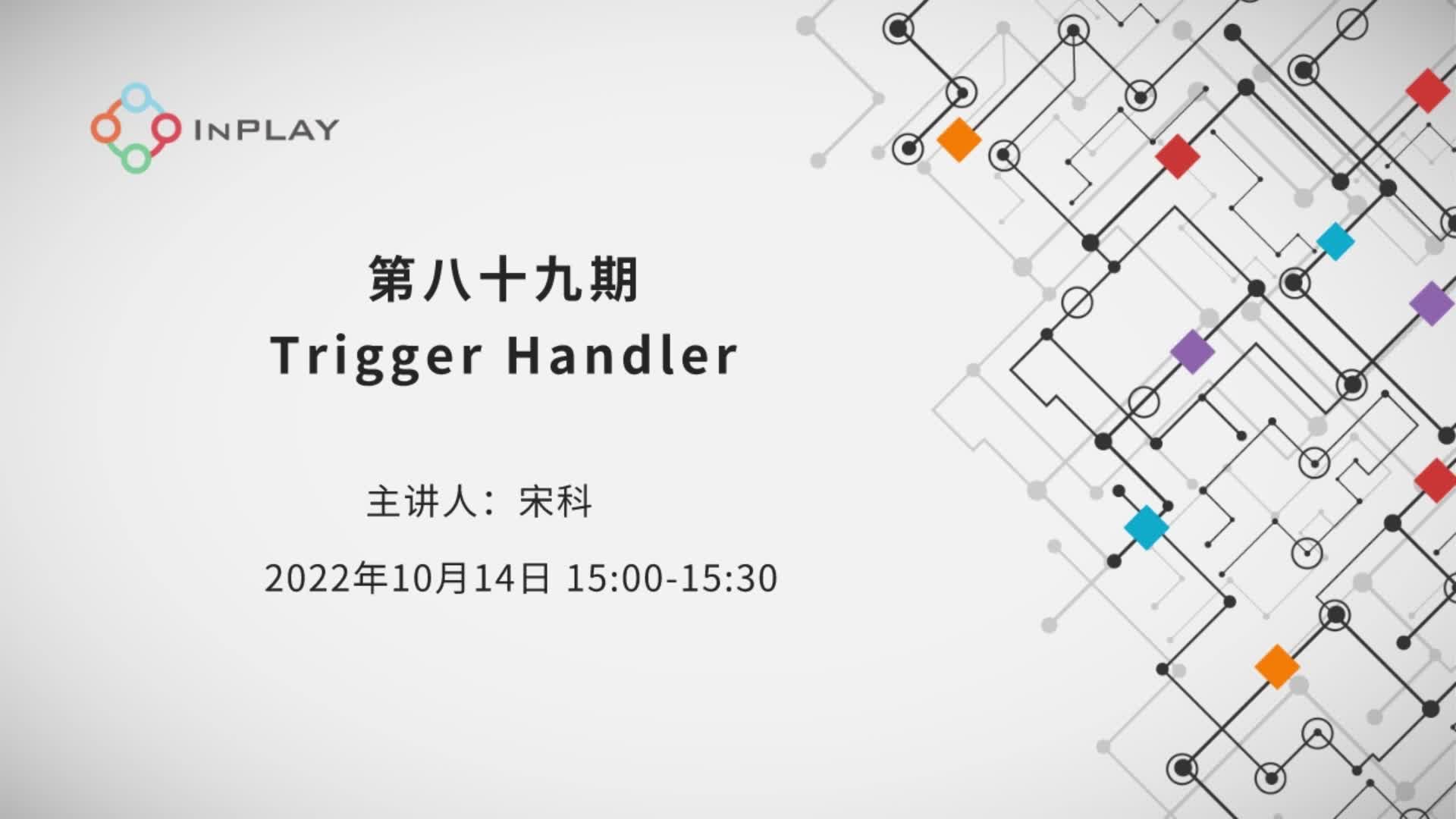Handler的使用
在Android開發中,Handler機制是一個很重要的知識點,主要用于消息通信。
Handler使用的三大步驟:
1、Loop.prepare()。
2、new一個Handler對象,并重寫handleMessage方法。
3、Loop.loop()。
先運行實例代碼觀察現象,再深入分析內部原理。
publicclassLooperThreadextendsThread{ privatestaticfinalString TAG = LooperThread.class.getSimpleName(); privateHandler handler; @Override publicvoidrun(){ Looper.prepare(); handler = newHandler(Looper.myLooper(), newHandler.Callback() { @Override publicbooleanhandleMessage(@NonNull Message msg){ Log.d(TAG, "what: "+ msg.what + ", msg: "+ msg.obj.toString()); returntrue; } }); Looper.loop(); } publicvoidsendMessage(intwhat, Object obj){ Message msg = handler.obtainMessage(what, obj); handler.sendMessage(msg); } }
publicclassFirstActivityextendsAppCompatActivity{ privatestaticfinalString TAG = FirstActivity.class.getSimpleName(); privateLooperThread looperThread; @Override protectedvoidonCreate(Bundle savedInstanceState){ looperThread = newLooperThread(); looperThread.start(); try{ Thread.sleep(1000); } catch(InterruptedException e) { e.printStackTrace(); } looperThread.sendMessage(1, "Hello android!"); }
編譯運行程序,輸出如下:
2021-10-0623:15:24.32320107-20107/com.example.activitytest D/FirstActivity: Task id is73 2021-10-0623:15:25.32820107-20124/com.example.activitytest D/LooperThread: what:1, msg:Hello android! 2021-10-0623:15:25.39420107-20132/com.example.activitytest I/OpenGLRenderer: Initialized EGL, version1.4 2021-10-0623:15:25.39420107-20132/com.example.activitytest D/OpenGLRenderer: Swap behavior 1
Loop.prepare方法內部實現原理
了解某個方法具體做了什么,最好的方法就是追蹤下去看源碼。我們跟隨IDE一步一步查看Loop.prepare到底做了什么。
/** Initialize the current thread as a looper.
* This gives you a chance to create handlers that then reference
* this looper, before actually starting the loop. Be sure to call
* {@link #loop()} after calling this method, and end it by calling
* {@link #quit()}.
*/
publicstaticvoidprepare() {
prepare(true);
}
privatestaticvoidprepare(boolean quitAllowed) {
if(sThreadLocal.get() != null) {
thrownewRuntimeException("Only one Looper may be created per thread");
}
sThreadLocal.set(newLooper(quitAllowed));
}
sThreadLocal是一個ThreadLocal類型變量,且ThreadLocal是一個模板類。Loop.prepare最終創建一個新的Looper對象,且對象實例被變量sThreadLocal引用。繼續追蹤下去,查看Looper構造方法做了什么操作。
privateLooper(booleanquitAllowed){
mQueue = newMessageQueue(quitAllowed);
mThread = Thread.currentThread();
}
......
MessageQueue(booleanquitAllowed) {
mQuitAllowed = quitAllowed;
mPtr = nativeInit();
}
到這里我們已經很清楚,Looper構造方法主要是創建一個MessageQueue,且MessageQueue構造方法調用native方法獲取底層queue的指針,mQuitAllowed值為true表示允許退出loop,false表示無法退出loop。結合前面Looper.prepare方法內部代碼,表示我們創建的Looper允許退出loop。 new一個Handler對象實例,到底做了什么?
/**
* Use the provided {@linkLooper} instead of the default one and take a callback
* interface in which to handle messages.
*
* @paramlooper The looper, must not be null.
* @paramcallback The callback interface in which to handle messages, or null.
*/
publicHandler(@NonNull Looper looper, @Nullable Callback callback){
this(looper, callback, false);
}
......
/**
* Use the provided {@linkLooper} instead of the default one and take a callback
* interface in which to handle messages. Also set whether the handler
* should be asynchronous.
*
* Handlers are synchronous by default unless this constructor is used to make
* one that is strictly asynchronous.
*
* Asynchronous messages represent interrupts or events that do not require global ordering
* with respect to synchronous messages. Asynchronous messages are not subject to
* the synchronization barriers introduced by conditions such as display vsync.
*
* @paramlooper The looper, must not be null.
* @paramcallback The callback interface in which to handle messages, or null.
* @paramasync If true, the handler calls {@linkMessage#setAsynchronous(boolean)} for
* each {@linkMessage} that is sent to it or {@linkRunnable} that is posted to it.
*
* @hide
*/
@UnsupportedAppUsage
publicHandler(@NonNull Looper looper, @Nullable Callback callback, booleanasync){
mLooper = looper;
mQueue = looper.mQueue;
mCallback = callback;
mAsynchronous = async;
}
Handler還有其他構造方法,這里我們調用其中一種構造方法創建一個Handler對象實例。該構造方法要求傳入一個Looper對象實例和CallBack對象實例。回顧一下最開始的例子代碼,我們傳入的形參,一個是由Looper.myLooper方法獲取的Looper對象實例,另外一個則是Callback匿名類。我們先看看Looper.myLooper到底獲取到了什么。
/**
* Return the Looper object associated with the current thread. Returns
* null if the calling thread is not associated with a Looper.
*/
publicstatic@Nullable Looper myLooper() {
returnsThreadLocal.get();
}
這里獲取到的就是前面Looper.prepare方法新創建的Looper對象實例,所以Looper.prepare方法必須在創建Handler對象實例之前調用。再回到Handler構造方法里,有幾個地方很關鍵: 1、Handler內部保存了Looper對象引用。 2、Handler內部保存了Looper內部的MessageQueue對象引用。 3、Handler內部保存了Callback對象引用。 4、mAsyncchronous值為true表示handleMessage方法異步執行,false表示同步執行。
Looper.loop方法內部實現原理
/**
* Run the message queue in this thread. Be sure to call
* {@link#quit()} to end the loop.
*/
publicstaticvoidloop(){
finalLooper me = myLooper();
if(me == null) {
thrownewRuntimeException("No Looper; Looper.prepare() wasn't called on this thread.");
}
if(me.mInLoop) {
Slog.w(TAG, "Loop again would have the queued messages be executed"
+ " before this one completed.");
}
me.mInLoop = true;
finalMessageQueue queue = me.mQueue;
// Make sure the identity of this thread is that of the local process,
// and keep track of what that identity token actually is.
Binder.clearCallingIdentity();
finallongident = Binder.clearCallingIdentity();
// Allow overriding a threshold with a system prop. e.g.
// adb shell 'setprop log.looper.1000.main.slow 1 && stop && start'
finalintthresholdOverride =
SystemProperties.getInt("log.looper."
+ Process.myUid() + "."
+ Thread.currentThread().getName()
+ ".slow", 0);
booleanslowDeliveryDetected = false;
for(;;) {
Message msg = queue.next(); // might block
if(msg == null) {
// No message indicates that the message queue is quitting.
return;
}
// This must be in a local variable, in case a UI event sets the logger
finalPrinter logging = me.mLogging;
if(logging != null) {
logging.println(">>>>> Dispatching to "+ msg.target + " "+
msg.callback + ": "+ msg.what);
}
// Make sure the observer won't change while processing a transaction.
finalObserver observer = sObserver;
finallongtraceTag = me.mTraceTag;
longslowDispatchThresholdMs = me.mSlowDispatchThresholdMs;
longslowDeliveryThresholdMs = me.mSlowDeliveryThresholdMs;
if(thresholdOverride > 0) {
slowDispatchThresholdMs = thresholdOverride;
slowDeliveryThresholdMs = thresholdOverride;
}
finalbooleanlogSlowDelivery = (slowDeliveryThresholdMs > 0) && (msg.when > 0);
finalbooleanlogSlowDispatch = (slowDispatchThresholdMs > 0);
finalbooleanneedStartTime = logSlowDelivery || logSlowDispatch;
finalbooleanneedEndTime = logSlowDispatch;
if(traceTag != 0&& Trace.isTagEnabled(traceTag)) {
Trace.traceBegin(traceTag, msg.target.getTraceName(msg));
}
finallongdispatchStart = needStartTime ? SystemClock.uptimeMillis() : 0;
finallongdispatchEnd;
Object token = null;
if(observer != null) {
token = observer.messageDispatchStarting();
}
longorigWorkSource = ThreadLocalWorkSource.setUid(msg.workSourceUid);
try{
msg.target.dispatchMessage(msg);
if(observer != null) {
observer.messageDispatched(token, msg);
}
dispatchEnd = needEndTime ? SystemClock.uptimeMillis() : 0;
} catch(Exception exception) {
if(observer != null) {
observer.dispatchingThrewException(token, msg, exception);
}
throwexception;
} finally{
ThreadLocalWorkSource.restore(origWorkSource);
if(traceTag != 0) {
Trace.traceEnd(traceTag);
}
}
if(logSlowDelivery) {
if(slowDeliveryDetected) {
if((dispatchStart - msg.when) <= 10) {
????????????????????????Slog.w(TAG, "Drained");
????????????????????????slowDeliveryDetected = false;
????????????????????}
????????????????} else?{
????????????????????if?(showSlowLog(slowDeliveryThresholdMs, msg.when, dispatchStart, "delivery",
????????????????????????????msg)) {
????????????????????????// Once we write a slow delivery log, suppress until the queue drains.
????????????????????????slowDeliveryDetected = true;
????????????????????}
????????????????}
????????????}
????????????if?(logSlowDispatch) {
????????????????showSlowLog(slowDispatchThresholdMs, dispatchStart, dispatchEnd, "dispatch", msg);
????????????}
????????????if?(logging != null) {
????????????????logging.println("<<<<< Finished to "?+ msg.target + " "?+ msg.callback);
????????????}
????????????// Make sure that during the course of dispatching the
????????????// identity of the thread wasn't corrupted.
????????????final?long?newIdent = Binder.clearCallingIdentity();
????????????if?(ident != newIdent) {
????????????????Log.wtf(TAG, "Thread identity changed from 0x"
????????????????????????+ Long.toHexString(ident) + " to 0x"
????????????????????????+ Long.toHexString(newIdent) + " while dispatching to "
????????????????????????+ msg.target.getClass().getName() + " "
????????????????????????+ msg.callback + " what="?+ msg.what);
????????????}
????????????msg.recycleUnchecked();
????????}
????}
代碼較長,我們只取關鍵代碼閱讀。通過myLooper獲取新創建的Looper對象實例,進而獲取Looper內部的MessageQueue對象實例。然后進入死循環中不斷調用MessageQueue類的next方法獲取MessageQueue里的message,然后調用dispatchMessage進行消息分發,最后由handleMessage進行消息處理。到這里Looper、MessageQueue和Handler之間的關系就建立起來了。介于篇幅,發送消息和消息處理原理,下篇文章詳細分析。
審核編輯:湯梓紅
-
Android
+關注
關注
12文章
3938瀏覽量
127545 -
通信
+關注
關注
18文章
6042瀏覽量
136138 -
代碼
+關注
關注
30文章
4801瀏覽量
68735 -
handler
+關注
關注
0文章
7瀏覽量
3035
原文標題:詳解Android Handler機制和原理(一)
文章出處:【微信號:AndroidPush,微信公眾號:Android編程精選】歡迎添加關注!文章轉載請注明出處。
發布評論請先 登錄
相關推薦

android 通信機制 socket
Android系統下Java編程詳解,Android學習者必備
詳解Linux內核搶占實現機制
Android的Handler類
Android 異步通信原理機制-- handler
詳細解答Android消息機制





 詳解Android Handler機制和原理
詳解Android Handler機制和原理












評論